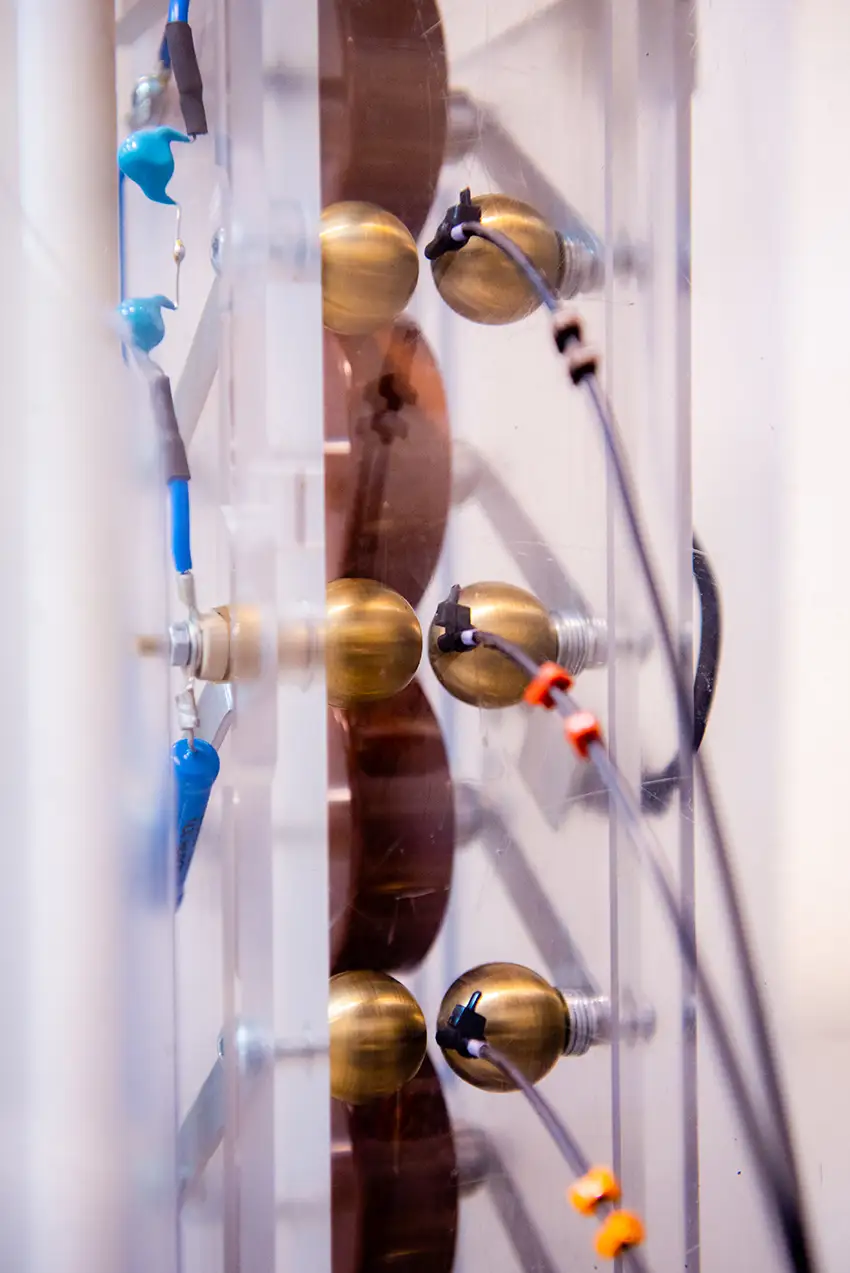Marx Generator
Introduced by Erwin Marx in 1925 to test high voltage equipment components for the emerging energy sector, the Marx generator is a frequently used high voltage pulse generator.
This generator is based on a principle of voltage multiplication. Its operation is quite simple: capacitors are charged in parallel to high impedances, then discharged in series, most conventionally by means of gas switches but also thanks to solid switching such as thyristors (generally used on weaker voltage / power systems). For an N stage Marx generator, the output voltage is typically equivalent to N multiplied by the input voltage, therefore the theoretical output voltage is directly related to the number of stages in the device. Output voltages can reach from a few kV or tens of kV to several MV.
Marx generators are adaptable to different types of needs with low energy applications (e.g. trigger generator as seen in the photo above) or high energy (up to several hundred kJ stored). The pulses are delivered in an extremely short time (a few nanoseconds to a few microseconds) depending on the application and the energy of the system. They can also adopt a single-shot or repetitive operation (from a few Hertz to a few tens of Hertz).
ITOPP develops and manufactures entire systems that are adapted to the needs of their clients.
